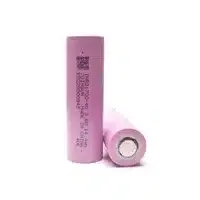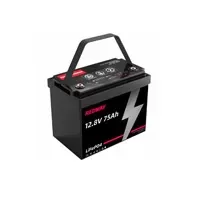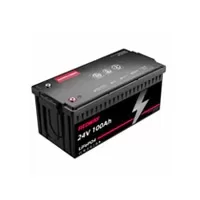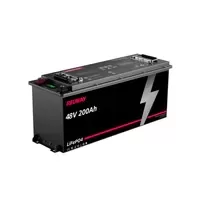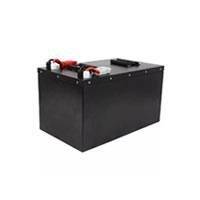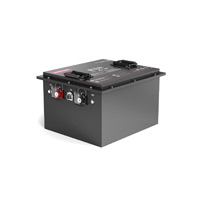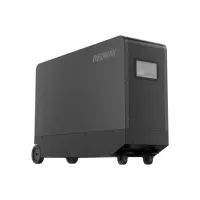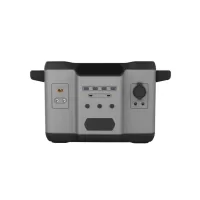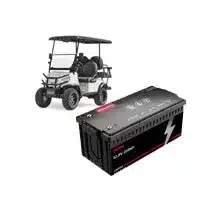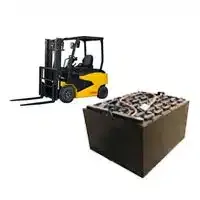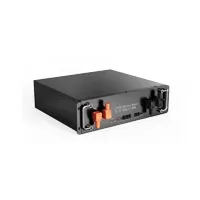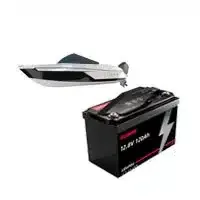Powering our modern world, lithium batteries have become an indispensable part of our daily lives. From smartphones to electric vehicles, these small but mighty energy storage devices play a crucial role in keeping us connected and on the move. But have you ever wondered where the raw materials for these powerful batteries come from? Join us as we delve into the fascinating journey of how lithium and other essential components make their way from the Earth’s crust to your hands, while also exploring the environmental concerns surrounding their extraction and efforts towards sustainable sourcing. So sit back, grab your favorite device powered by a lithium battery, and let’s embark on this enlightening adventure together!
The major components of a lithium battery
Lithium batteries are complex powerhouses that have revolutionized the way we store and use energy. They consist of several key components, each playing a vital role in their functionality.
The first major component is the anode, typically made of graphite. This serves as the source of lithium ions during charging and discharging cycles. On the other side, we have the cathode, which is often composed of lithium cobalt oxide or lithium iron phosphate. The cathode acts as a sink for these ions, allowing them to move back and forth between the electrodes.
To facilitate ion movement within the battery, a separator material is used to keep the anode and cathode physically separated while enabling ionic conductivity. Polyolefin membranes are commonly employed for this purpose.
Additionally, there’s an electrolyte solution that provides a medium through which lithium ions can travel between electrodes during operation. Typically, liquid electrolytes based on organic solvents are used in commercial lithium batteries due to their high conductivity.
Another crucial element is the current collector. It ensures efficient flow of electrons between external circuitry and electrodes by providing good electrical conductivity across all battery components.
These various components work together harmoniously to create a reliable energy storage device that powers everything from smartphones to electric vehicles. Understanding their roles helps us appreciate just how intricate these tiny powerhouses truly are!
Sources of lithium: where it comes from and how it’s extracted
One of the key components in lithium batteries is, as the name suggests, lithium. But where does this essential element come from? Let’s dive into its sources and extraction methods.
Lithium can be found in various places around the world, primarily in salt flats or brine deposits. One major source of lithium is South America’s “lithium triangle,” which encompasses Bolivia, Argentina, and Chile. These countries hold vast reserves of lithium-rich brine beneath their salt flats.
To extract lithium from these brine deposits, a process called evaporation is often used. The brine is pumped into large pools where it undergoes solar evaporation for several months. As the water evaporates under the sun’s heat, it leaves behind concentrated lithium salts that can then be further processed to obtain pure lithium.
Another significant source of lithium comes from hard rock minerals like spodumene or petalite. These minerals are mined through traditional mining techniques such as drilling and blasting. Once extracted, they go through a series of processes including crushing and flotation to separate out the valuable lithium content.
While these extraction methods provide access to much-needed resources for battery production, they also bring environmental concerns. Both evaporation-based extraction and mining activities have potential impacts on local ecosystems if not properly managed.
However, there are ongoing efforts towards sustainable sourcing practices within the industry. Companies are exploring ways to minimize water consumption during evaporation processes and implementing measures to mitigate negative impacts on surrounding ecosystems caused by mining operations.
Moreover, recycling initiatives have gained traction as a means to reduce dependency on new raw materials altogether. Recycling technologies enable us to recover valuable metals like lithium from used batteries instead of relying solely on fresh extractions.
In conclusion (not), understanding where our raw materials come from allows us to make informed choices about supporting companies that prioritize responsible sourcing practices while also encouraging technological advancements in battery manufacturing that promote sustainability throughout their lifecycle! So let’s stay informed and make conscious decisions as consumers to support a greener future.
Other important raw materials in lithium batteries and their sources
Other Important Raw Materials in Lithium Batteries and Their Sources
Apart from lithium, there are several other key raw materials that play a crucial role in the production of lithium batteries. One such material is cobalt, which is primarily sourced from countries like the Democratic Republic of Congo (DRC), Australia, and Russia. However, concerns have been raised about unethical mining practices and human rights issues associated with cobalt extraction in certain regions.
Another important component is graphite, which serves as the anode material in lithium-ion batteries. The majority of natural graphite used in battery production comes from China, followed by Brazil and Canada. However, efforts are being made to diversify sources due to geopolitical risks.
Nickel is also a critical element found in lithium batteries. It helps enhance energy density and stability. Major nickel-producing countries include Indonesia, the Philippines, Russia, and New Caledonia.
Manganese is another essential ingredient used as a cathode material. It can be found abundantly worldwide but major producers include South Africa, Australia, China, Gabon, and Brazil.
Lastly,, aluminum foil plays a significant role as it forms part of the casing for battery cells or pouches,. Aluminum production involves extracting bauxite ore mostly found in Australia Guinea ,and Brazil .
It’s important to note that while these materials are necessary for producing lithium batteries., their sourcing can raise environmental concerns along with social challenges . Therefore,it becomes crucial for companies to ensure responsible sourcing practices while simultaneously exploring alternative materials that could lessen reliance on potentially problematic sources..
Environmental concerns surrounding the extraction of raw materials
Environmental Concerns Surrounding the Extraction of Raw Materials
The extraction of raw materials for lithium batteries, such as lithium itself and other important elements like cobalt and nickel, is not without its environmental concerns. The process of mining these minerals can have significant impacts on ecosystems and local communities.
One major concern is the destruction of habitats and biodiversity loss. Mining activities often require clearing large areas of land to access mineral deposits. This can result in the destruction of forests, wetlands, and other critical ecosystems that support a wide range of plant and animal species.
Additionally, mining can lead to water pollution through the release of toxic substances into nearby rivers or groundwater sources. Chemicals used in the extraction process may contaminate water supplies, making them unsafe for both human consumption and wildlife.
Furthermore, the energy-intensive nature of extracting these raw materials contributes to greenhouse gas emissions. The machinery used in mining operations relies heavily on fossil fuels, which releases carbon dioxide into the atmosphere and exacerbates climate change.
Another concern is related to social issues within local communities where mining takes place. In some cases, indigenous peoples’ rights are violated as their ancestral lands are taken over for resource extraction without their consent or fair compensation. Additionally, working conditions within mines can be dangerous and exploitative for workers who may face health hazards due to exposure to harmful chemicals or accidents caused by inadequate safety measures.
These environmental concerns highlight the need for responsible sourcing practices that minimize negative impacts on ecosystems and communities while meeting global demand for lithium batteries. Efforts towards sustainable sourcing include promoting transparency in supply chains, supporting initiatives that prioritize worker safety and fair wages in mining operations, investing in research for cleaner extraction methods with reduced environmental footprints,
In conclusion,! it’s essential to recognize that our increasing reliance on lithium batteries comes with environmental costs at various stages from raw material extraction to battery disposal.
As consumers! we play an important role by demanding products sourced sustainably,
supporting companies that prioritize ethical practices,! and advocating for stricter regulations in the industry. By doing
Efforts towards sustainable sourcing and recycling of raw materials
Efforts towards sustainable sourcing and recycling of raw materials for lithium batteries are gaining momentum as the world recognizes the importance of environmental conservation. Companies in the battery industry are increasingly focusing on responsible mining practices to minimize ecological impact.
One approach is to source lithium from areas with lower environmental vulnerability, minimizing disturbance to sensitive ecosystems. This involves careful selection of mining sites and adherence to strict regulations that protect biodiversity and water resources. Additionally, efforts are being made to improve extraction techniques that reduce energy consumption and waste generation.
Recycling is another key aspect of sustainability in the battery industry. By recovering valuable materials like lithium, cobalt, and nickel from used batteries, we can decrease our reliance on new resource extraction while also reducing waste sent to landfills. Advances in recycling technologies have made it possible to extract these metals efficiently, making recycled materials an important source for future battery production.
To promote sustainable practices further, initiatives like closed-loop supply chains have been introduced. These aim to ensure that discarded batteries are collected and properly recycled at the end of their life cycle. Governments are implementing regulations requiring manufacturers or importers of batteries to take responsibility for their proper disposal.
Public awareness plays a crucial role too – as consumers become more conscious about sustainability issues, they can support companies committed to responsible sourcing by choosing products made with ethically-sourced materials or opting for refurbished or recycled batteries whenever possible.
The path towards truly sustainable sourcing and recycling in the lithium battery industry may still have challenges ahead but ongoing efforts suggest a promising future where eco-friendly practices continue driving innovation and positive change
Future advancements in sourcing and manufacturing of lithium batteries
The future of sourcing and manufacturing lithium batteries holds exciting possibilities. As the demand for clean energy solutions continues to rise, researchers and industry leaders are working towards developing more efficient methods for obtaining the necessary raw materials.
One area of focus is exploring alternative sources of lithium. While traditional extraction methods rely on mining from rock formations or salt flats, there are ongoing efforts to harness lithium from unconventional sources such as geothermal brines or seawater. These innovative approaches could potentially reduce environmental impact and increase resource availability.
Additionally, advancements in battery technology aim to optimize material usage and improve efficiency. Researchers are constantly seeking ways to enhance electrode materials like graphite and cobalt by making them lighter, more durable, and less reliant on scarce resources. This not only ensures a more sustainable supply chain but also contributes to better overall battery performance.
Furthermore, automation is playing a significant role in streamlining the manufacturing process of lithium batteries. By implementing robotics and artificial intelligence technologies, manufacturers can increase production rates while maintaining high-quality standards. This not only improves scalability but also reduces costs associated with labor-intensive processes.
In terms of sustainability, recycling initiatives are gaining traction in the industry. Recycling programs aim to recover valuable metals like lithium, cobalt, nickel from spent batteries instead of relying solely on primary sources. This closed-loop approach minimizes waste generation and reduces our reliance on virgin materials.
Looking ahead, research into advanced storage technologies like solid-state batteries shows promise for even greater improvements in both sourcing and manufacturing practices. Solid-state batteries eliminate the need for flammable liquid electrolytes found in conventional li-ion batteries while offering higher energy density and increased safety.
As we continue down this path towards greener energy solutions, it is crucial that responsible consumerism plays a role as well. By supporting companies committed to sustainable practices throughout their supply chains – from raw material extraction to end-of-life recycling – we can collectively contribute towards creating a cleaner future powered by lithium batteries
Conclusion: the role of responsible consumerism in supporting sustainable practices in the production
As we continue to rely on lithium batteries for our everyday devices and the growing demand for electric vehicles, it is crucial to recognize the importance of responsible consumerism in supporting sustainable practices in their production. By making informed choices and supporting companies that prioritize ethical sourcing and recycling of raw materials, we can contribute to a more environmentally-friendly future.
One way consumers can make a difference is by seeking out products that use ethically sourced lithium and other raw materials. This means choosing brands that are transparent about their supply chain and work with suppliers who prioritize fair labor practices, environmental protection, and local community engagement.
Additionally, recycling plays a vital role in reducing the overall impact of lithium battery production. Many countries have implemented programs to encourage battery recycling, allowing valuable metals like lithium, cobalt, nickel, and copper to be recovered from old or damaged batteries. By participating in these initiatives or properly disposing of used batteries at designated collection points, we can ensure that valuable resources are not wasted.
Furthermore, as technology continues to advance rapidly in this field, researchers are exploring alternative sources for raw materials used in lithium batteries. For instance, efforts are underway to develop new extraction methods that minimize environmental damage while also exploring options such as using seawater as a potential source of lithium.
In conclusion (but without saying “in conclusion”), the journey from extracting raw materials for lithium batteries to their final product involves complex processes with significant environmental implications. However, by promoting sustainable sourcing practices through responsible consumer choices and supporting advancements toward greener technologies and recycling initiatives – together we can help shape an industry that meets our energy needs while preserving our planet’s health for generations to come!

